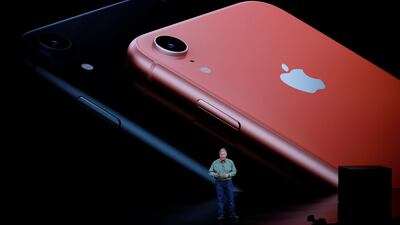Apple is experimenting with iPhone marketing strategies it rarely uses – such as discount promotions through generous device buyback terms – to help boost sales of its flagship product.
Executives moved some marketing staff from other projects to work on bolstering sales of the latest handsets in October, about a month after the iPhone XS went on sale and in the days around the launch of the iPhone XR. One source described it as a “fire drill”, and a possible admission that the devices may have been selling below some expectations.
Since then, Apple has made a series of aggressive trade-in offers that temporarily reduced the cost of some of its latest iPhones, a rare step for a company that’s been raising device prices in recent years to lift revenue and profit. Apple spokeswoman Trudy Muller declined to comment.
_______________
Read more:
Apple will wait till 2020 to release 5G iPhone
_______________
On Sunday, Apple kicked these efforts into high gear, adding a new banner to the top of its website advertising the iPhone XR for $449 (Dh1,648). This is $300 less than its official sticker price. The deal, noted with an asterisk and described at the bottom of the page, requires customers to trade in an iPhone 7 Plus, a high-end handset from two years ago.
Apple lost about a fifth of its market value since the start of October on signs of waning iPhone demand. On Monday, iPhone supplier Cirrus Logic cut its holiday quarter sales forecast 16 per cent due to “recent weakness in the smartphone market”. Apple also stopped reporting iPhone unit sales, sparking concern its most-important product is no longer growing.
The shares slid about four per cent Tuesday in New York to $177.75. HSBC downgraded the stock, saying iPhone unit growth is over for now. “What has made the success of Apple, a concentrated portfolio of highly desirable (and pricey) products, is now facing the reality of market saturation,” the bank’s analysts told investors.
This new marketing push may give holiday sales a bump and help the company with its broader goal of increasing the number of Apple devices in use. However, the approach may undermine a key bullish argument from analysts: that higher prices will make up for lacklustre unit sales.
Last week, the company started offering a limited-time promotion that boosts the trade-in value of older iPhones by an additional $25 to $100. Apple retail employees have also been told in recent weeks to mention the programme more often to consumers in stores, according to another source. Some Japanese wireless carriers also cut iPhone XR pricing last week by way of subsidies.
Last year, there were similar concerns about sales of the iPhone X, and the handset ended up selling well. And Apple has used similar marketing tactics before. In 2007, it cut the price of the iPhone by $200, less than three months after the device launched. When the iPhone 3G debuted in 2008, Apple worked with carriers to subsidise the cost. It has also quietly increased trade-in values for older iPhone models in the past.
Apple marketing executive Greg Joswiak tried to quell concern about sales by telling CNET last week that the iPhone XR has been the company’s best seller since it went on sale at the end of October.
Regardless of such efforts, “investors are very focused on the longer-term strategy and growth outside of iPhones, given what we’ve seen now coming out of this last iPhone cycle,” Wedbush Securities analyst Daniel Ives said. “In a fearful technology environment, investors aren’t going to give Apple the benefit of the doubt.”
Apple is working on new products and services, including an augmented-reality headset, driverless car technology and digital offerings like original video. Analysts also expect a new business model centred on subscriptions.
Those options are riskier than the iPhone, which for a decade enticed millions of consumers to hand over hundreds of dollars for a new handset every two years. The public hasn’t flocked to AR technology in the same way yet, while Netflix has a huge head start in digital video, Alphabet’s Waymo leads in autonomous vehicles, and Amazon’s Prime service has nailed subscriptions online.
“The question yet again is: ‘What’s the next phase of innovation?’” Michael Olson, an analyst at Piper Jaffray, said. Apple spent $35 billion on research and development from 2016 to 2018. The technology that emerges from this huge investment “needs to become a new engine of growth,” he added.
Finding another hit like the iPhone will be almost impossible. Since Apple launched the device in 2007, it’s become one of the most successful products on Earth. The gadget generated $167 billion in revenue during Apple’s latest fiscal year, about the same as Alphabet and Disney combined.

